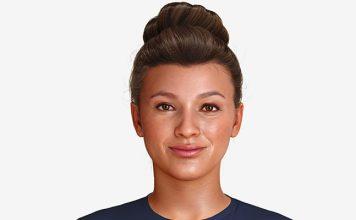As of April 10, 2024, if you have inquiries about maintaining a healthy diet, managing stress, or strategies to quit smoking, you can seek advice from S.A.R.A.H.
S.A.R.A.H. stands as a fresh interactive artificial intelligence tool introduced by the World Health Organization. Furthermore, S.A.R.A.H. can offer insights on mental health, cancer, heart disease, lung disease, and diabetes.
I Inquired, “What is a healthy weight for man who is 5 feet 10 inches tall?”
“The ideal weight for a man who is 5 feet 10 varies, depending on factors such as age, muscle mass, and overall health,” S.A.R.A.H. said. “It’s important to focus on maintaining a healthy lifestyle rather than a specific number on a scale.”
Subsequently, she provided access to materials for managing weight.
Replacing a previous iteration, S.A.R.A.H., short for Smart AI Resource Assistant for Health, supersedes Florence. Florence was created to address inquiries regarding COVID-19 and debunk misconceptions about vaccinations. Unlike Florence, who was trained on a restricted health database, S.A.R.A.H. employs Open AI’s GPT (generative pretrained transformer) extensive language model to respond to a broader spectrum of health-related queries.
This health assistant is multilingual and crafted to be culturally considerate and devoid of partiality.
“Addressing cultural and health literacy differences globally is crucial for S.A.R.A.H.’s long-term success,”
expressed Katerina Botsiou, a communications consultant stationed at the World Health Organization Headquarters in Geneva, Switzerland.
S.A.R.A.H. is proficient in eight languages and has the capability to communicate in each of them.“thus more accessible to diverse populations.” The technology is trained on data from the World Health Organization and trusted partners “Health Organization and trusted partners “to ensure culturally sensitive outputs,”According to Botsiou
Imbuing AI with a persona capable of expressing emotions marks a significant leap forward compared to a text-based chatbot, as stated by Brian Anderson, MD, who serves as the CEO of the Coalition for Health AI (CHAI). This coalition comprises AI professionals dedicated to aiding others in creating secure and beneficial applications of AI in healthcare.
“Aesthetically, [S.A.R.A.H.] is engaging. The ability to display a human face and the mannerisms … is really compelling,” he said.
The technology offers both visual and non-visual signals that mimic human interaction, he explained. Additionally, it is beneficial that S.A.R.A.H. engages individuals based on their language, culture, and educational background.
S.A.R.A.H. is depicted as a woman in her late twenties, with brown eyes, brown hair tied back, and dressed in a blue T-shirt. Throughout the conversation, her facial expressions alter, revealing wrinkles on her skin, and she blinks her eyes. Moreover, she seems to subtly sway, as if adjusting her weight from one foot to the other.
“So long as the way that the AI is used to is to help an individual navigate a complex health question, that’s a wonderful thing,”
Anderson, who was not part of the team that created S.A.R.A.H., highlighted that S.A.R.A.H. operates around the clock. Therefore, when providing guidance on achieving a restful night’s sleep, her availability is a significant asset.“Do as I say” than “Do as I do.”
According to Botsiou, there were obstacles encountered during the technology’s development. They refined AI algorithms to enhance accuracy, ensure data integrity, and uphold stringent data privacy and security protocols.
Despite the impressive nature of the technology, certain facial expressions and pauses during conversations serve as indications that S.A.R.A.H. is still a work in progress. A notable disclaimer on the S.A.R.A.H. website acknowledges that the information provided may not always be entirely accurate. Anderson expressed uncertainty regarding the reliability and reproducibility of the answers she provides.
Employing generative AI, the technology is designed to learn and develop continuously over time.
WHO collaborated with the tech company Soul Machines Limited and the creative agency Rooftop to create and implement S.A.R.A.H., emphasizing a collaborative effort in its development.“authentic, human-like responses.”
The World Health Organization S.A.R.A.Hintends to closely monitor S.A.R.A.H., providing frequent updates to ensure transparency, accountability, and ethical use of the technology.
Explore the World Health Organization’s “Meet S.A.R.A.H.” website and activate your device’s microphone and speaker to interact with S.A.R.A.H.
